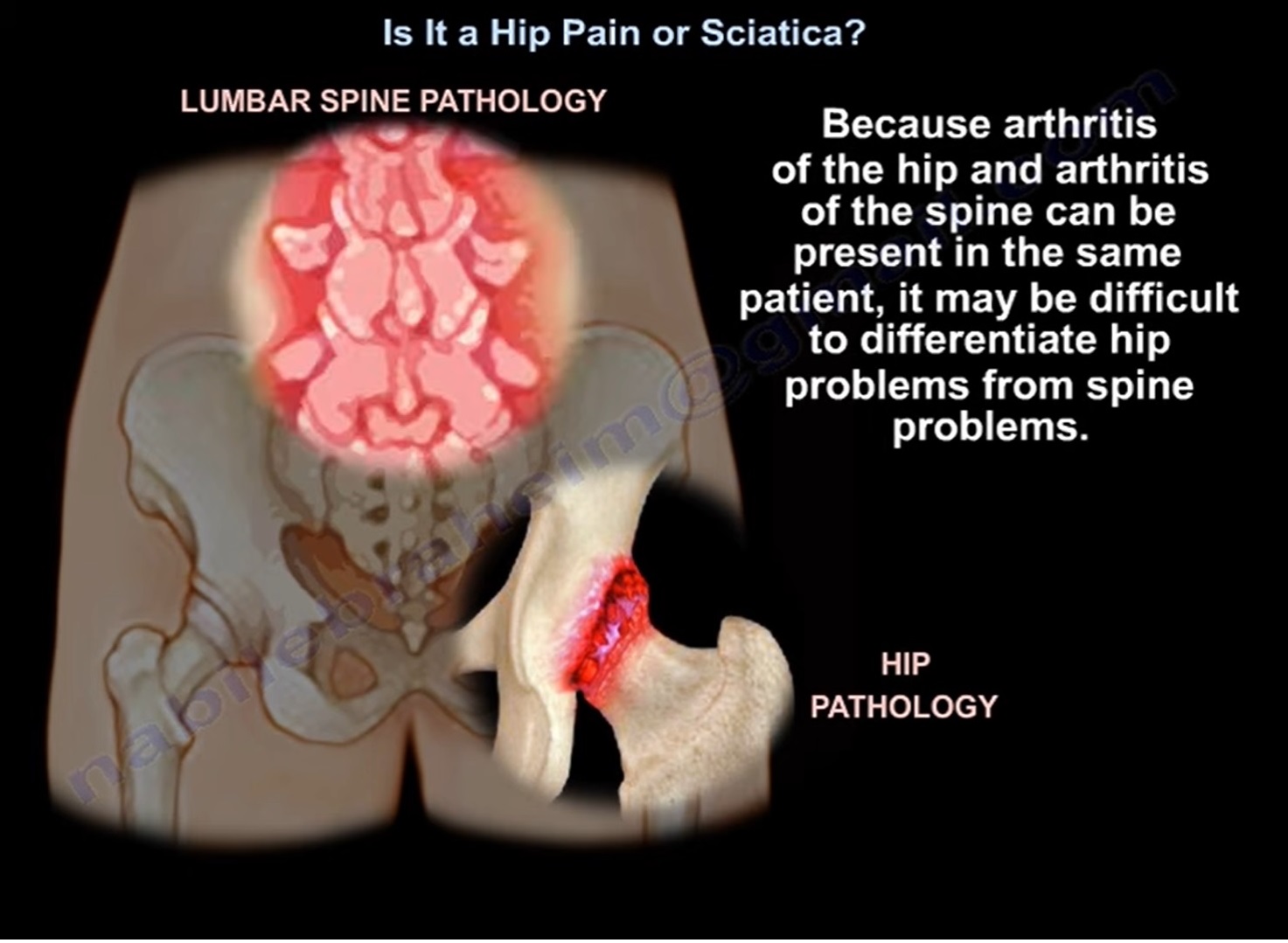Courtesy: Prof Nabil Ebraheim, University of Toledo, Ohio, USA
Hip and Spine Pathology:
Challenges in Diagnosis
1. Hip and spine pathologies can present with similar symptoms, making diagnosis challenging.
2. Both conditions can coexist in the same patient, requiring careful evaluation to determine the primary source of pain.
Clinical Presentation
1. Hip Pain:
– Typically presents with groin pain, limping, and antalgic gait.
– Patients with groin pain are 7 times more likely to have a hip disorder than a spine condition.
2. Spine Pain (Lumbar Stenosis):
– Typically presents with buttock pain, neurogenic claudication, and symptoms worsened by standing.
– Patients often lean forward to alleviate symptoms.
Differentiation
1. Groin pain: suggests hip pathology.
2. Pain radiating below the knee: can occur in both hip and spine conditions (about 50%).
3. Claudication: suggests spinal stenosis.
4. Standing: worsens spinal stenosis symptoms.
5. Tying shoes: worsens hip arthritis symptoms.
Diagnostic Tools
1. X-rays and MRI findings: should be correlated with clinical examination.
2. Injection of the hip joint: can help differentiate between hip and spine pain.
– If the patient gets more than 50% relief from injection, it is likely a hip problem.
Specific Conditions
1. Trochanteric Bursitis:
– Characterized by pain over the greater trochanter, tenderness to palpation, and pain when resting on the involved side.
– More common in middle-aged women.
2. Hip Arthritis:
– Classic presentation includes hip and groin pain, limping, and antalgic gait.
– Decreased range of motion of the hip is a key finding.
Key Takeaways
1. Careful history and physical exam are crucial to determine the primary source of pain.
2. Correlation of clinical examination with x-ray and MRI findings is essential.
3. Injection of the hip joint can be a useful diagnostic tool in differentiating between hip and spine pain.

Leave a Reply